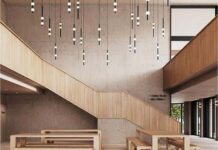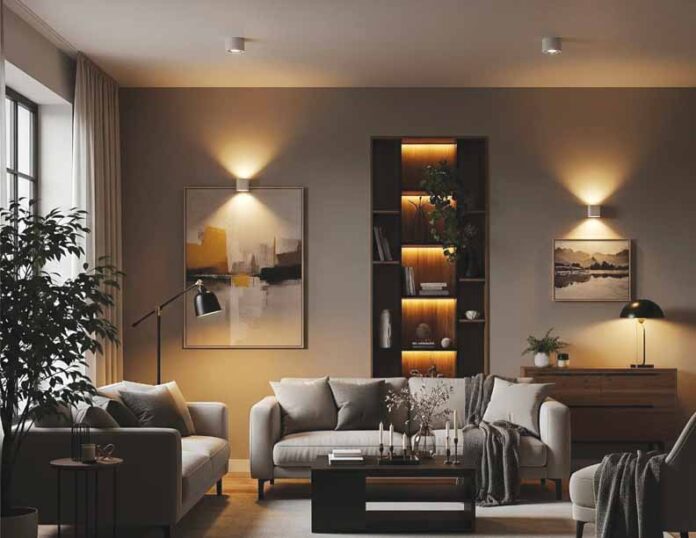
When most people envision their dream home, they start with finishes, furniture, and floorplans. Lighting—ironically—often gets left in the shadows. It sculpts volumes, casts shadows, and brings depth to materials that would otherwise fall flat. It influences mood, enhances function, and supports health by aligning with our circadian rhythms.
It’s commonly treated as a last-minute detail, something to “add in” after the walls are painted and the décor is in place. But for those of us who live and breathe illumination, light is far more than an accessory—it’s the invisible architecture that gives form, meaning, and emotion to the spaces we inhabit.
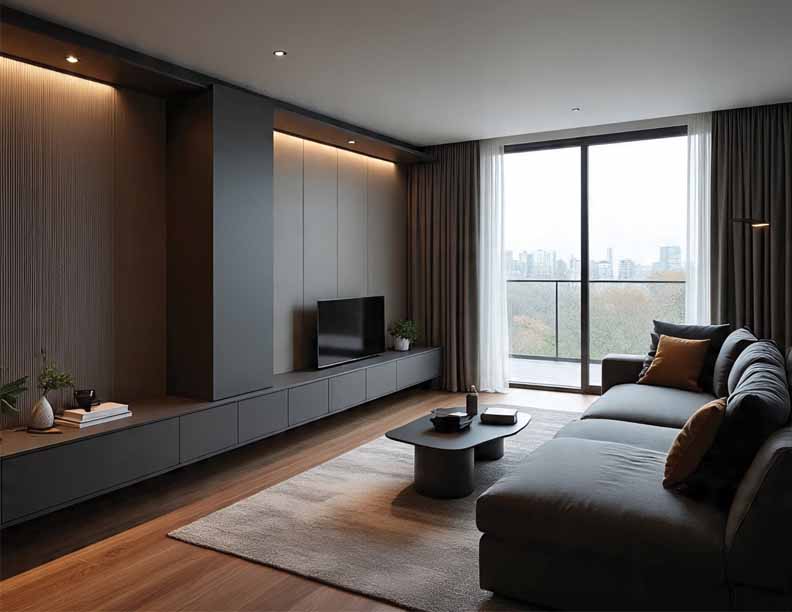
As a lighting consultant, I see light as a language—one that speaks to comfort, clarity, and beauty. A well-lit home doesn’t simply allow you to see better; it allows you to live better.
It promotes energy during the day and restfulness at night. It enhances safety while adding drama. It adapts to your needs, supports your routines, and reflects your personality.
In this article, I’ll take you inside the world of professional residential lighting design—sharing the process, strategies, and science behind creating homes that feel as good as they look. From blueprint analysis to fixture selection, from mood lighting to smart controls, we’ll explore what it takes to make lighting an integral part of the design, rather than an afterthought.
The Role of Light: More Than Meets the Eye
Light does more than illuminate—it defines the way we feel, move, and experience life within our homes. It influences our behaviour, emotional state, productivity, and even our health. As lighting consultants, we understand that thoughtful lighting design is not simply about visibility—it’s about curating a lifestyle.
In residential design, truly effective lighting must deliver on four essential pillars: Functionality, Aesthetics, Flexibility, and Efficiency. Together, these dimensions inform every decision, from fixture selection to control systems, ensuring that the result enhances both the form and function of the home.
Functionality – Lighting that Works for You
At its core, lighting must support everyday activities—whether cooking, reading, or navigating at night. It needs to be safe, comfortable, and tailored to the people using the space. Age, mobility, and lifestyle all influence how light should be applied. Functional lighting also minimizes glare, reduces eye strain, and enhances visibility exactly where it’s needed.
Aesthetics – Enhancing the Beauty of a Space
Lighting highlights finishes, brings textures to life, and defines architectural features. It sets the tone and mood—cool and crisp for a kitchen, warm and soft for a bedroom. Accent lighting can turn artwork or design elements into focal points, while thoughtful placement elevates the entire space.
Flexibility – Adapting to Life’s Changing Rhythms
A well-lit home is one that adapts—bright for a morning routine, dim and cozy for a quiet evening. Layered lighting (ambient, task, and accent) combined with smart controls lets users shift settings based on time, mood, or activity. Flexibility brings comfort, efficiency, and personalization.
Efficiency – Smart and Sustainable Choices
Energy-efficient lighting reduces costs and environmental impact. Today’s LED systems use less power and last longer, while daylighting strategies minimize artificial use. Controls like dimmers, sensors, and timers further cut waste. Sustainable lighting isn’t just smart—it’s future-ready.
When these four elements work together, lighting becomes more than a utility—it becomes a silent partner in how we live, feel, and connect with our homes.
Layered Lighting: The Consultant’s Framework
Professional lighting designers approach homes with a three-tiered strategy:
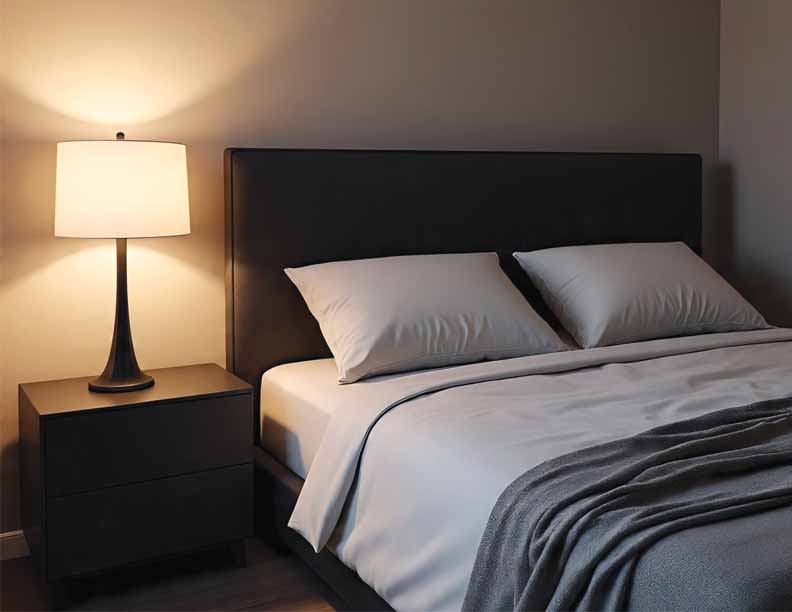
Ambient Lighting
The base layer. It provides overall illumination and sets the mood. Recessed lights, large pendants, or flush-mounted ceiling fixtures typically do this job. We aim for comfort—uniform, glare-free, and responsive to the time of day.
Task Lighting
This is precision lighting—focused beams that aid specific activities like reading, cooking, or working. Under-cabinet lighting in the kitchen, desk lamps, or vanity lights in bathrooms fall into this category.
Accent Lighting
This layer adds depth and drama. We use it to highlight artwork, textures, architectural features, or plants. Well-placed accent lighting introduces visual hierarchy and storytelling into a space.
Designing with Daylight
No artificial light can fully replicate the beauty of natural daylight—but it can be a powerful complement. That’s why one of the first things I do on any project is analyze the site: how the sun moves across it, where windows face, and how light penetrates throughout the day.
We might then layer in architectural elements like light shelves, skylights, or translucent blinds to optimize daylight harvesting—reducing energy needs while enhancing spatial quality. Daylight-responsive lighting controls further ensure a seamless transition between natural and artificial light.
Tuning Light to the Human Clock
An emerging trend in residential lighting is circadian lighting—systems designed to align with the body’s natural rhythms. These setups mimic the sun’s progression: cool, bright light in the morning to stimulate alertness, and warm, dimmer tones in the evening to support relaxation and melatonin production.

Tunable LED lighting and smart controls allow homeowners to automatically adjust color temperature and intensity throughout the day, significantly enhancing sleep quality, mood, and even productivity.
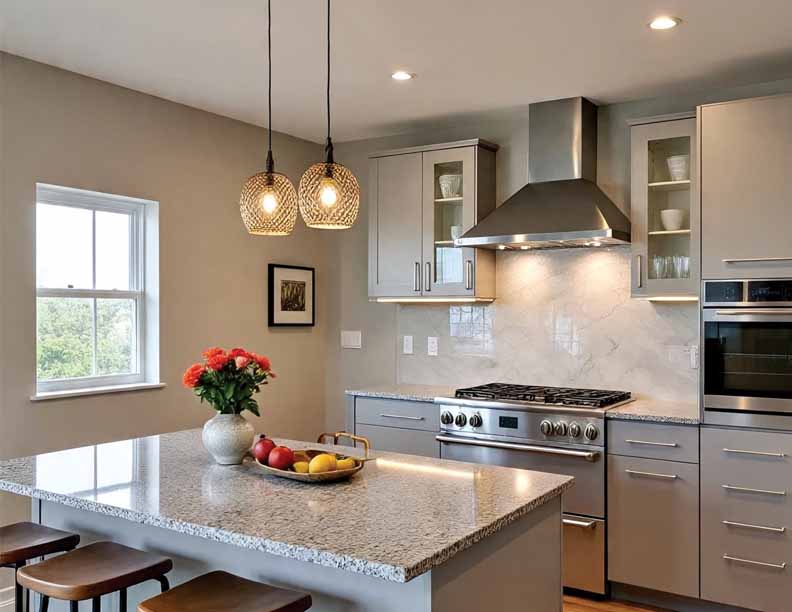
Designing Room by Room
Each room has its own set of functions, emotional tone, and architectural constraints. Here’s how we typically approach lighting by space:
Living Room: A Scene for Everything
This is the most multifunctional zone, and its lighting must be versatile:
- Ambient: Ceiling downlights or soft uplighting
- Task: Floor or table lamps for reading or working
- Accent: Wall washers or picture lights for art, shelving, or plants
Use dimming and smart scenes to move from daytime brightness to cozy evening ambiance.
Kitchen: Where Precision Meets Style
The kitchen is both a workspace and a social hub. Lighting should prioritize function first:
- Task: Bright, shadow-free lighting for prep zones (e.g., under-cabinet LEDs)
- Ambient: Recessed lighting or linear pendants
- Accent: Pendants above islands, toe-kick LED strips for night use
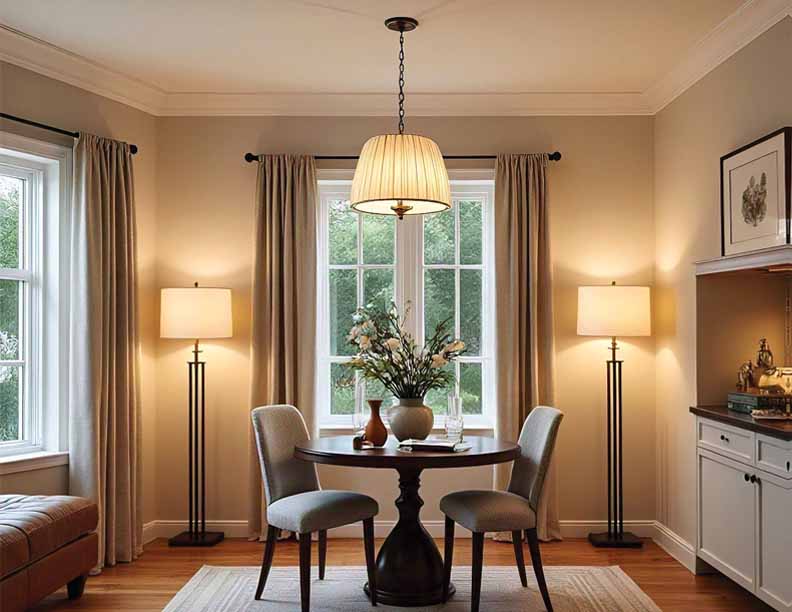
Always ensure high CRI (Color Rendering Index) lighting for accurate color differentiation in food and surfaces.
Bedroom: A Sanctuary of Softness
In bedrooms, comfort is key. We favor:
- Ambient: Warm (2700K) dimmable ceiling lighting
- Task: Reading lamps with focused beams and personal control
- Accent: Cove lighting or indirect wall sconces for visual softness
Optional features include motion-activated night lighting beneath beds and circadian-responsive controls.
Bathroom: Functional Elegance
Grooming requires precision, but spa-like relaxation also deserves attention:
- Vanity: Vertical lighting on both sides of the mirror for flattering illumination
- Ambient: Moisture-resistant downlights
- Accent: Backlit mirrors or recessed niche lighting in showers
Avoid overhead-only lighting near mirrors—it casts unflattering shadows.
Dining Room: Mood-Setting Drama
Lighting sets the tone for meals, from family dinners to formal entertaining:
- Feature Pendant: Hung 28–32” above the table for intimacy
- Ambient: Soft fill lights, dimmable
- Accent: Art lights or wall grazing to create depth and interest
Opt for warm, dimmable lighting to foster connection and focus on the food.
Outdoor Areas: Beauty, Safety, Usability
Exterior lighting enhances curb appeal, security, and usability after dark:
- Pathway and step lighting: For safety and guidance
- Wall sconces: Near entry points
- Landscape uplighting: Highlighting trees, textures, or facades
- Deck and pool lighting: To extend evening entertainment
Use motion sensors and timers to conserve energy and boost convenience.
Technology & Controls: Designing for Flexibility
No matter how beautiful your lighting scheme, it’s incomplete without control. Today’s homeowners expect systems that are smart, intuitive, and adaptable.
We often recommend:
- Smart scenes: Pre-set modes for morning, evening, or events
- Voice integration: For hands-free control
- Occupancy and daylight sensors: To automate use and reduce waste
- Dimming systems: From simple Triac dimmers to advanced DALI/DMX platforms
Well-designed control systems transform lighting into a lifestyle tool—supporting everything from productivity to relaxation.
Choosing Fixtures: The Consultant’s Eye
For every fixture we select, we weigh several technical and visual criteria:

- Beam angles – narrow for accent, wide for general
- Glare control – low UGR ratings to avoid eye strain
- Color temperature and CRI – tailored to task and mood
- Energy efficiency – always LED-based, often dimmable
- Style and finish – matching interior palettes and architecture
- Maintenance – integrated vs replaceable components
We also ensure compatibility with automation systems and future-proofing against obsolescence.
What to Avoid: Common Lighting Pitfalls
Despite the best intentions, many residential lighting designs fall short due to avoidable mistakes. These pitfalls can compromise comfort, aesthetics, and efficiency. Here are some of the most frequent errors—and how to steer clear of them:
Over-lighting – Brighter Doesn’t Mean Better
A common misconception is that more light equals better design. In reality, excessive lighting can create glare, diminish ambiance, and lead to energy waste. Over-lit spaces feel clinical and harsh, stripping away the warmth that makes a house feel like a home. The goal should be appropriate illumination—enough to support activities without overwhelming the space. This is where layering and dimming become essential, allowing for both functionality and atmosphere.
Poor Fixture Placement – Design Disruption Through Misalignment
Even the most beautiful fixtures lose their impact when poorly placed. Misaligned downlights, pendants hung at the wrong height, or sconces that don’t align with furniture can visually disturb the balance of a room. Scale matters too—undersized fixtures can feel lost in large spaces, while oversized ones can dominate inappropriately. Precise placement and proportional sizing are key to achieving harmony and coherence in lighting design.
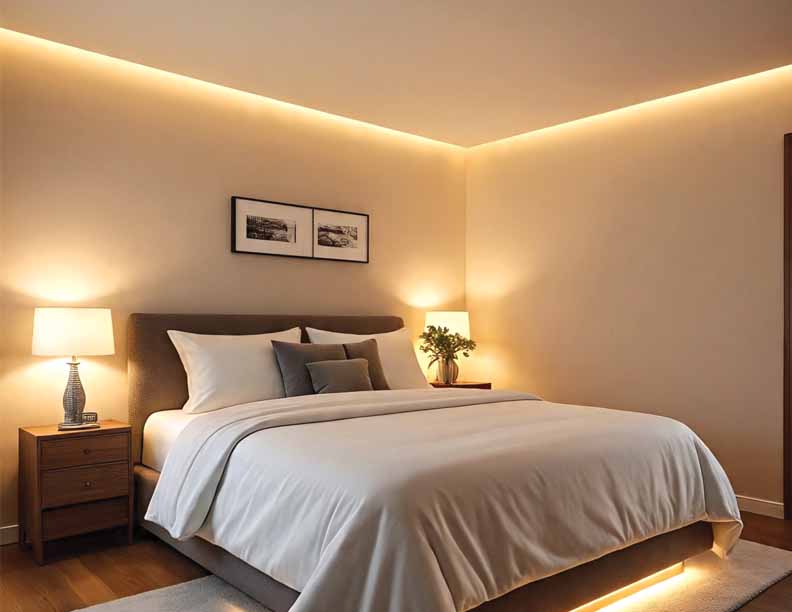
Lack of Dimming or Zoning – A Rigid, One-Note Experience
Lighting that can’t adapt to different needs quickly becomes frustrating. Without dimmers or zoned control, a room can only serve one lighting scenario—often too bright or too dull for certain activities. Dimming capabilities add flexibility and energy efficiency, while zoning allows residents to light specific areas independently. Together, they turn a static space into a dynamic environment that supports a range of moods and functions.
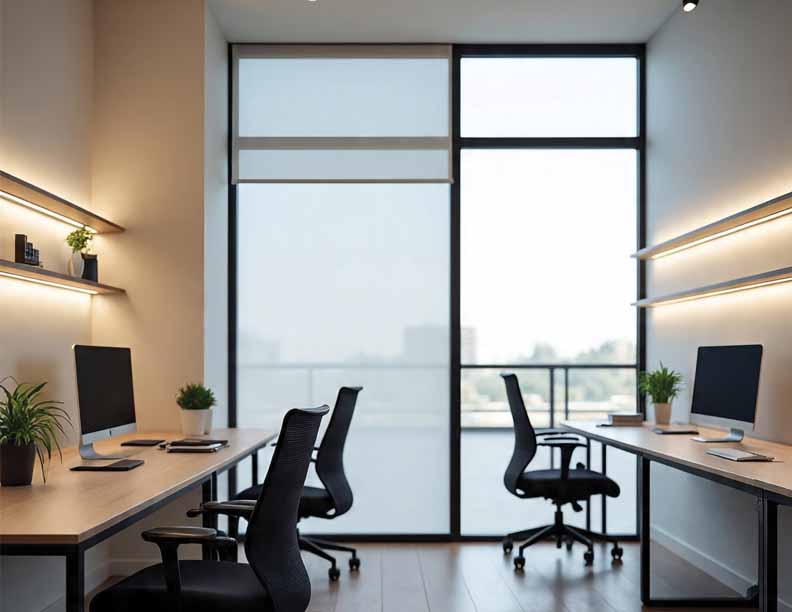
Inconsistent Color Temperatures – A Visual Disconnect
Mixing cool and warm light sources within the same visual field creates dissonance and discomfort. For example, combining 2700K warm white bedside lamps with 4000K overhead fixtures can disrupt the room’s visual cohesion.
A consistent color temperature palette is vital for both aesthetic and psychological comfort. Generally, warmer tones (2700K–3000K) are suited for living areas and bedrooms, while cooler tones (3500K–4000K) are reserved for task-focused zones like kitchens or home offices.
Neglecting Outdoor Lighting – Missed Opportunities in Safety and Ambiance
Outdoor lighting is often relegated to a few porch lights or security floods, leaving pathways, gardens, and architectural elements in darkness. This not only limits nighttime usability but also undermines curb appeal and safety. Thoughtfully designed exterior lighting extends the living space outdoors, highlights landscaping, and provides secure access and egress after dark. Motion sensors, timers, and low-voltage systems can make this both effective and efficient.
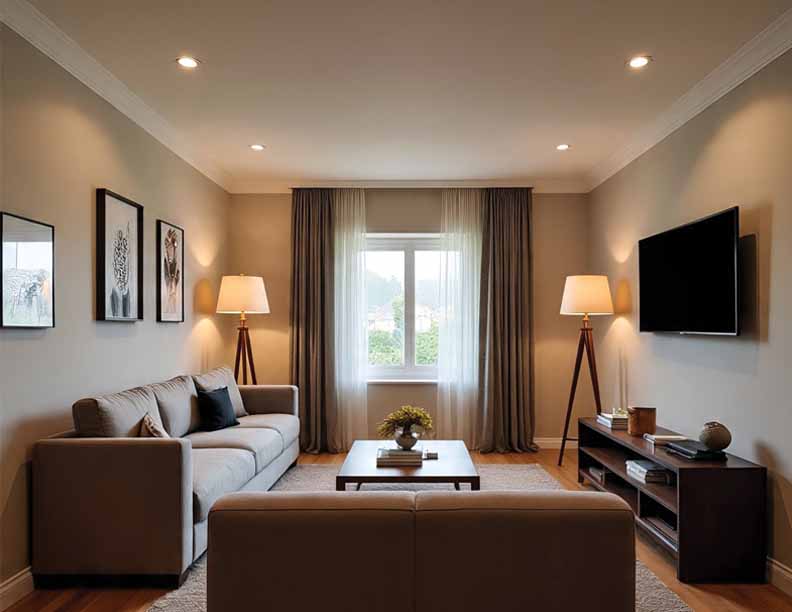
Underestimating Lighting Controls – Falling Behind in a Smart Era
In a world increasingly driven by smart technology, manual-only lighting systems can feel outdated and inconvenient. Without integrated controls—such as dimmers, presets, or smart home connectivity—residents miss out on features like scene selection, automation, or energy-saving schedules. A good control system elevates convenience, efficiency, and comfort, making the home more intuitive and future-ready.Working with a professional helps avoid these oversights and ensures a timeless, adaptive solution.
The Future of Residential Lighting
Residential lighting is entering an era of innovation, personalization, and sustainability. Some exciting developments include:
Human-Centric Lighting: Tunable white and RGBW systems allow users to adjust lighting to their biological needs and emotional states—perfect for wellness-conscious living.
Architectural Integration: Lighting is increasingly embedded into the building itself: linear coves, hidden profiles, and glowing surfaces that blur the line between fixture and structure.
Energy Intelligence: Sensors, timers, and responsive systems reduce waste while enhancing comfort. Daylight harvesting and LEED/WELL certifications are setting new benchmarks.
AI-Powered Personalization: Smart lighting systems now learn your habits and preferences, auto-adjusting to match your routines—creating a home that truly responds to its inhabitants.
Final Reflections: Lighting as Emotional Architecture
Lighting is more than technical—it’s emotional architecture. A well-lit home feels different. It supports your rhythms, frames your routines, and elevates everyday experiences.
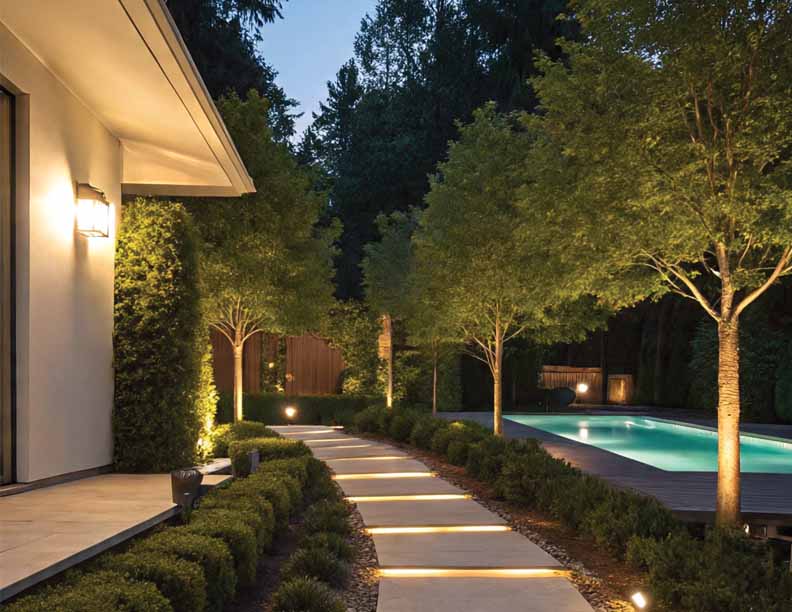
When done well, lighting disappears into the background—but its impact is profound. It softens, energizes, calms, and delights. And behind every great lighting scheme is a consultant who understands both the physics of light and the psychology of space.
If your home feels incomplete, dull, or uninspired—consider this: it might not be the layout. It might just be the light.

Sandeip Anand (M.A Lighting Design Germany) is the Director at AIMS Lighting Design, Mumbai having professional lighting experience of more than 20 years.



